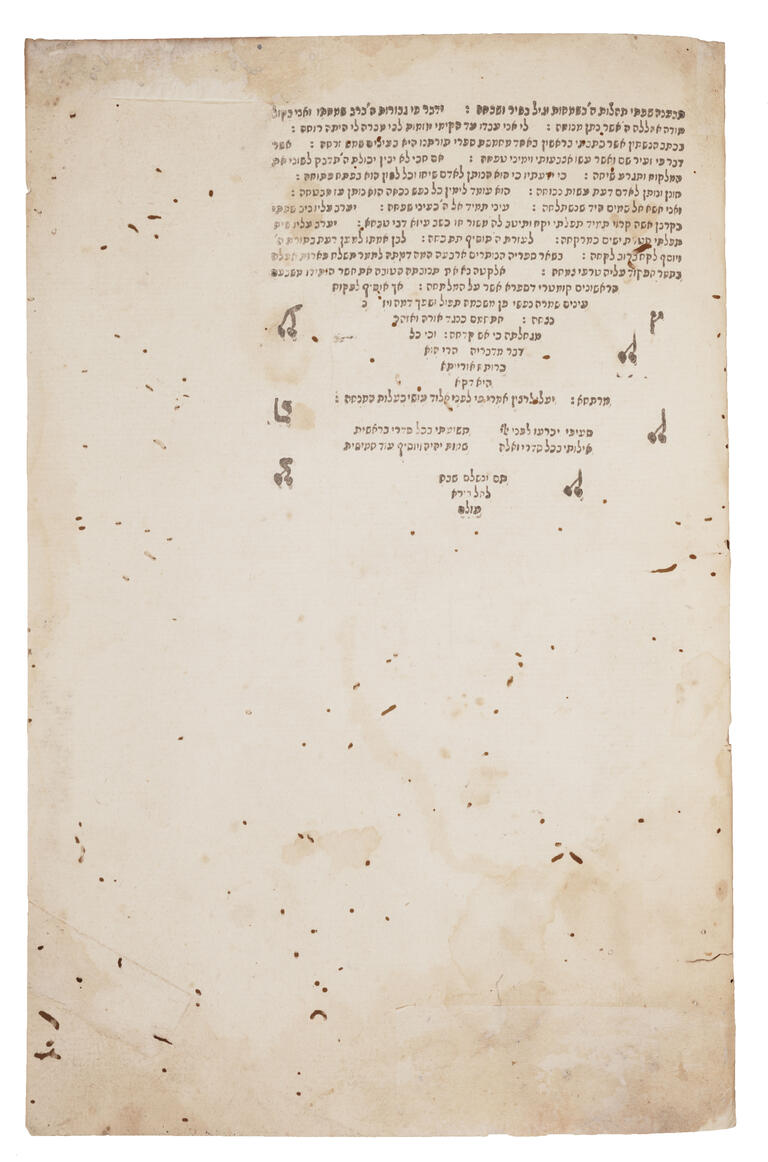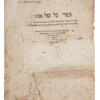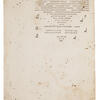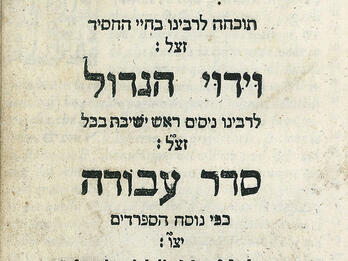Menaḥem Egozi’s Gal shel egozim (Nut Garden)
Doña Reina Mendes
ca. 1593–1595






These are two pages from a book printed by Doña Reina Mendes at the Hebrew printing press she founded at her residence, Belvedere. This work, Gal shel egozim (Nut Garden) by Menaḥem Egozi, is a collection of homilies on the book of Genesis.
Credits
-
Menahem Egozi, from Gal shel egozim (Belvedere, 1593?). Courtesy of the Library of Congress.
-
Menahem Egozi, from Gal shel egozim (Belvedere, 1593?). Courtesy of the Library of Congress.
Published in: The Posen Library of Jewish Culture and Civilization, vol. 5.
You may also like
Tsemaḥ David (The Sprout of David): On the Invention of the Printing Press
Sefer ha-zikuk (The Book of Expurgation)

Me‘on ha-sho’alim (Abode of the Supplicants)
Editor’s Apology: She’elot u-teshuvot Maharil
Approbation for a Prayer Book
Proofreader’s Preface: Seder tefilot ke-minhag kahal kadosh Sefarad (The Order of the Prayers of the Holy Congregation of Spain)
Creator Bio
Doña Reina Mendes
Born in Lisbon, Doña Reina (Ana) Nasi Mendes was the daughter of the famous philanthropist Doña Gracia Nasi (Beatrice de Luna). Following the death of her husband in 1535, and the renewed efforts of the Portuguese Inquisition, Doña Gracia fled to Antwerp and later Venice and Ferrara (where the family practiced Judaism openly for the first time) with her sister and daughter. After settling in Constantinople in 1553, Doña Reina married her cousin Joseph Nasi (Joao Miguez), Duke of Naxos and Cyclades, an important figure at the sultan’s court. Following in her mother’s footsteps, Doña Reina used the substantial fortune she inherited upon her husband’s death (90,000 ducats) to further Jewish learning. She founded a Hebrew printing press at her palatial residence, Belvedere, the only printing house in Constantinople at the time, enabling Jewish scholars in the Ottoman Empire to print their works. Doña Reina thus became the first woman to establish a Hebrew press (although others before her had inherited and managed printing establishments). Seven books printed by this press have survived (according to estimates, it printed at least fifteen).
Related Guide
Jewish Printing and Book Culture
Jewish printing unified far-flung communities by standardizing religious texts, created textual uniformity, and enabled vernacular translations, and facilitated the spread of Jewish texts and knowledge.
Related Guide
Early Modern Jewish Languages
As Ashkenazi and Sephardi Jews migrated eastward, Yiddish and Ladino emerged as distinct languages. Both languages developed literary traditions, as print became more widespread.
Why would being a widow have been advantagious for Reina in establishing her press?
Why do you think Reina would have established a press as the means to support herself?
How might this story change our perspective of women and literacy in the early modern period?
You may also like
Tsemaḥ David (The Sprout of David): On the Invention of the Printing Press
Sefer ha-zikuk (The Book of Expurgation)



